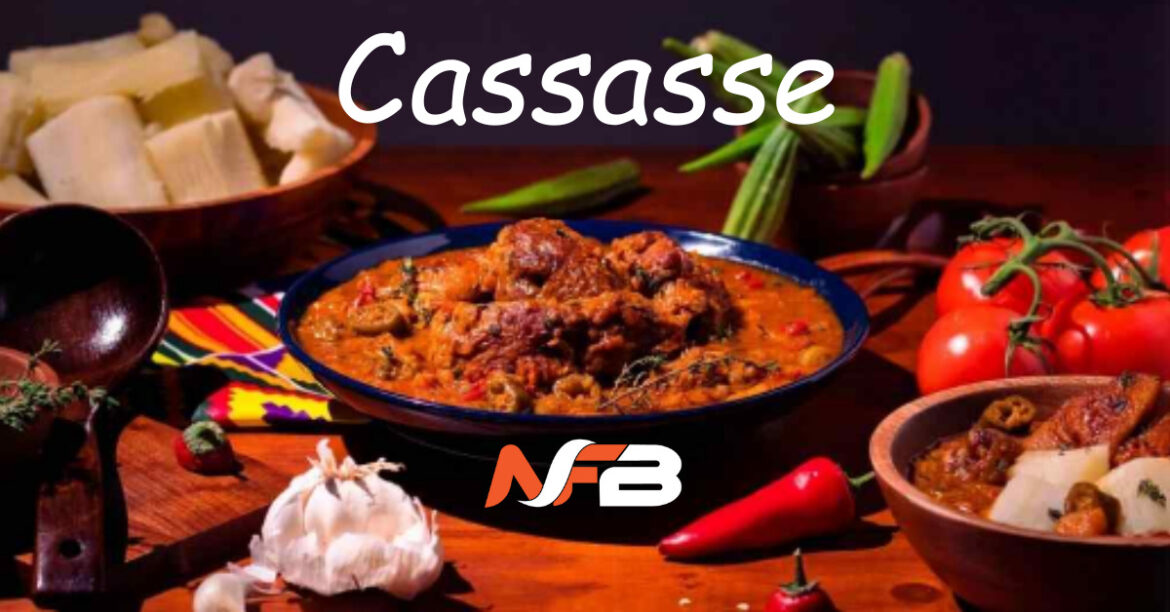In the realm of culinary delights, few dishes offer the rich blend of history, flavor, and cultural significance as cassasse. This traditional dish, rooted in various regions across the world, boasts a tantalizing combination of ingredients and spices that have delighted palates for generations. From its humble origins to its modern-day variations, cassasse continues to captivate food enthusiasts with its unique taste and health benefits.
Unveiling the Origins of Cassasse
History
The history of cassasse traces back to ancient times, where it was first crafted by ingenious cooks seeking to utilize local ingredients. While its exact origins remain shrouded in mystery, historians suggest that cassasse likely emerged in regions where cassava, a key ingredient, thrived. Over the centuries, cassasse evolved alongside cultural shifts, adapting to the tastes and preferences of diverse communities.
Ingredients and Flavors
At its core, cassasse embodies simplicity and versatility. The dish typically features cassava, a starchy root vegetable renowned for its nutritional value and resilience in various climates. To elevate its flavor profile, cooks incorporate an array of spices and ingredients, including meats, vegetables, and aromatic herbs. The result is a harmonious blend of savory, sweet, and spicy notes that tantalize the taste buds with each bite.
Exploring the Journey of Cassasse
From Root to Plate The Cassava Story
Cassava
Central to the cassasse experience is cassava, a staple crop in many tropical regions. Known for its drought tolerance and high yield, cassava serves as the foundation of the dish, providing a hearty texture and subtle sweetness. Harvested from the earth and transformed through meticulous preparation, cassava embodies the resilience and resourcefulness of communities around the world.
Cooking Process
The journey from cassava to cassasse is a labor of love, requiring patience and skill. After harvesting, the cassava roots undergo a series of steps to extract their starch and remove any toxins. Once processed, the cassava is grated, fermented, and combined with other ingredients to form the base of the dish. Whether boiled, fried, or baked, the cooking process imbues cassasse with its signature flavor and texture, creating a culinary masterpiece that celebrates the bounty of the earth.
Variations and Significance

Regional Variations
As cassasse spread across the globe, it underwent various adaptations influenced by local tastes and traditions. In the Caribbean, for example, cassasse may feature coconut milk and seafood, reflecting the region’s abundant marine resources. In Africa, cassasse recipes may incorporate a vibrant array of spices and vegetables, reflecting the continent’s diverse culinary heritage. Each variation offers a unique glimpse into the cultural tapestry of its respective region, showcasing the creativity and ingenuity of local cooks.
Cultural Significance
Beyond its culinary appeal, cassasse holds deep cultural significance for many communities. In some cultures, cassasse is reserved for special occasions and celebrations, symbolizing abundance and prosperity. For others, it serves as a comforting reminder of home, evoking memories of shared meals and cherished traditions. Whether served at a family gathering or enjoyed as a weekday meal, it brings people together, fostering connections and preserving cultural heritage for future generations.
Health Benefits and Nutritional Value
Nutritional Profile
Despite its indulgent flavors, it offers a surprisingly nutritious dining option. Cassava, rich in carbohydrates and dietary fiber, provides sustained energy and promotes digestive health. Additionally, the dish’s inclusion of lean meats, fresh vegetables, and aromatic spices contributes to a well-rounded meal that nourishes the body and satisfies the senses.
Health Benefits
Beyond its nutritional value, it is celebrated for its potential health benefits. The antioxidants found in cassava and other ingredients help combat inflammation and oxidative stress, reducing the risk of chronic diseases. Furthermore, the dish’s reliance on wholesome, natural ingredients aligns with principles of whole-food nutrition, supporting overall well-being and vitality.
Tips for Cooking and Enjoying Cassasse
Cooking Tips
For aspiring chefs eager to embark on their it journey, a few tips can elevate the cooking experience. First, ensure the cassava is properly processed to remove any toxins and enhance its flavor. Experiment with different spices and flavor combinations to tailor the dish to your preferences. Lastly, don’t be afraid to get creative and add your own twist to traditional recipes—after all, cooking is an art form meant to be enjoyed and shared.
Serving Suggestions
When it comes to serving it, the possibilities are endless. Pair it with a side of fresh salad or steamed vegetables to add color and nutritional value to your meal. For a heartier option, serve it alongside grilled meats or seafood, allowing the flavors to complement each other harmoniously. Don’t forget to garnish with fresh herbs and a squeeze of lime or lemon for a burst of brightness.
Conclusion Embracing the Essence of Cassasse
In conclusion, cassasse stands as a testament to the enduring power of food to unite, nourish, and inspire. From its humble origins to its global presence, this beloved dish embodies the rich tapestry of human experience, weaving together flavors, traditions, and stories from around the world. Whether enjoyed as a comforting meal at home or savored as a culinary adventure in a distant land, it invites us to embrace the beauty of diversity and celebrate the shared joys of food and community. So, the next time you find yourself craving a taste of something extraordinary, why not embark on a journey with it and discover the magic for yourself?
Q1: What is Cassasse?
A1: It is a traditional dish found in various regions across the world, typically made with cassava and a blend of spices, meats, and vegetables.
Q2: Where does Cassasse originate from?
A2: The exact origins of Cassasse are uncertain, but it is believed to have originated in regions where cassava is abundant, such as parts of Africa and the Caribbean.
Q3: What are the main ingredients in Cassasse?
A3: The main ingredients in it usually include cassava (also known as yuca), meats such as chicken or fish, vegetables, spices, and sometimes coconut milk.
Q4: What does Cassasse taste like?
A4: It has a unique flavor profile that varies depending on the ingredients used, but it often combines savory, sweet, and spicy notes, with the cassava providing a hearty texture.
Q5: What are the health benefits of Cassasse?
A5: It can be nutritious, as it often includes ingredients like cassava, which is high in carbohydrates and fiber, as well as lean meats and vegetables. However, the nutritional content can vary depending on the recipe.
Q6: How is Cassasse typically served?
A6: It can be served in various ways, such as with rice, salad, or other side dishes. It can also be enjoyed on its own as a hearty meal.
Q7: Are there different variations of Cassasse?
A7: Yes, there are many variations of it depending on the region and cultural influences. Some may include coconut milk or different types of meats and spices.
Q8: Is Cassasse difficult to make at home?
A8: While it may require some preparation and cooking time, it is generally not overly difficult to make at home, especially with the availability of recipes and tutorials online.
Q9: Can Cassasse be made vegetarian or vegan?
A9: Yes, it can be adapted to suit vegetarian or vegan diets by omitting the meat and using vegetable broth or coconut milk as a substitute.
Q10: What makes Cassasse significant in culinary culture?
A10: It is significant in culinary culture because it represents a blend of flavors, techniques, and traditions from various regions, reflecting the diversity and richness of global cuisine.








